Classical Beats on Brixton Streets

Mebrakh Houghton-Johnson, Brixton Market, Electric Avenue: Immortalised in the Eddy Grant song that hymns the 1981 Riots, Electric Avenue was the first UK street to be lit by electric power and once boasted Victorian-era glass and steel canopies that ran its whole length, sadly lost in the 80s. Today, it is the beating heart of Brixton, with a daily market providing every kind of African, Caribbean, South American and Asian foodstuff and product, and more characters than you can count. It is rarely quiet and Mebrakh went (almost) entirely unnoticed as he played.

Ruby Moore, Tunstall Square in front of the Bowie mural. Painted in 2013 as a tribute to the Brixton-born singer, the Bowie Mural became an impromptu shrine and site of pilgrimage for fans after his death in 2016, and seemed a fitting spot to photograph Ruby in performance, an approving Aladdin Sane looking on… Despite a position right on the high street, it can be a remarkably peaceful spot.
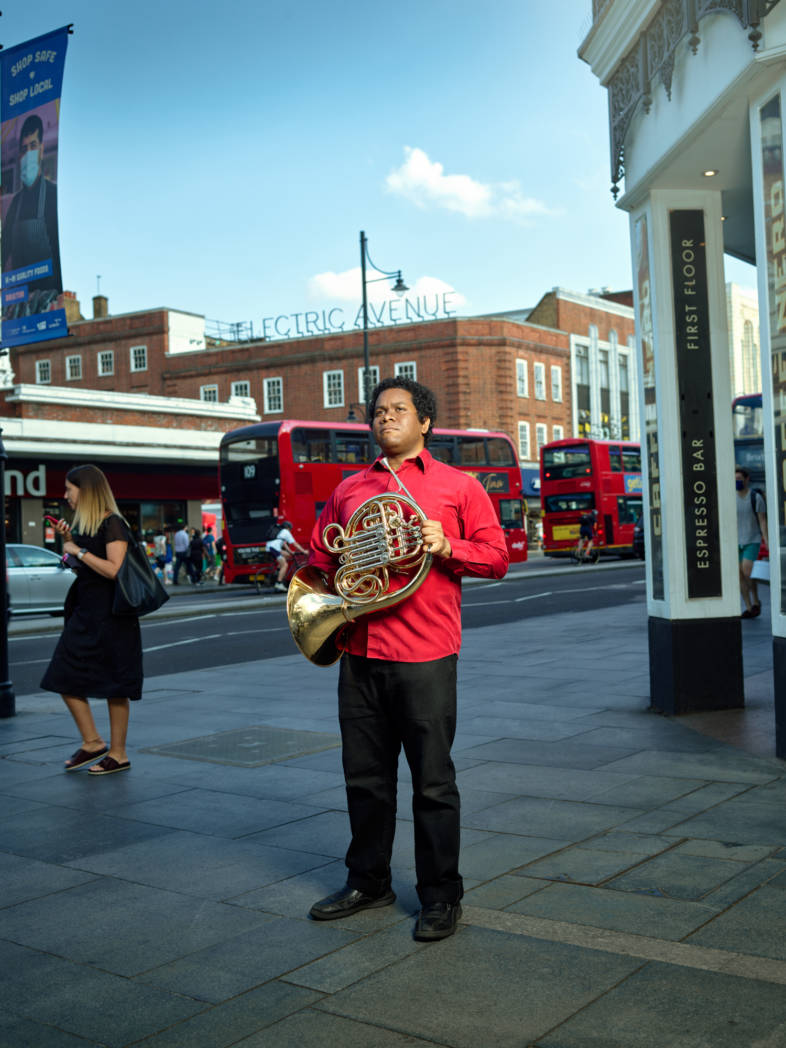
Derryck Nasib, Brixton Road opposite Electric Avenue. Outside the department store Morleys of Brixton, a local institution for 141 years, and across the road from Electric Avenue, with its new neon sign. Alongside other BCO members Deronne and Mebrakh, Derryck also plays in Chineke! Orchestra; the first majority Black, Asian and ethnically diverse professional orchestra in Europe.
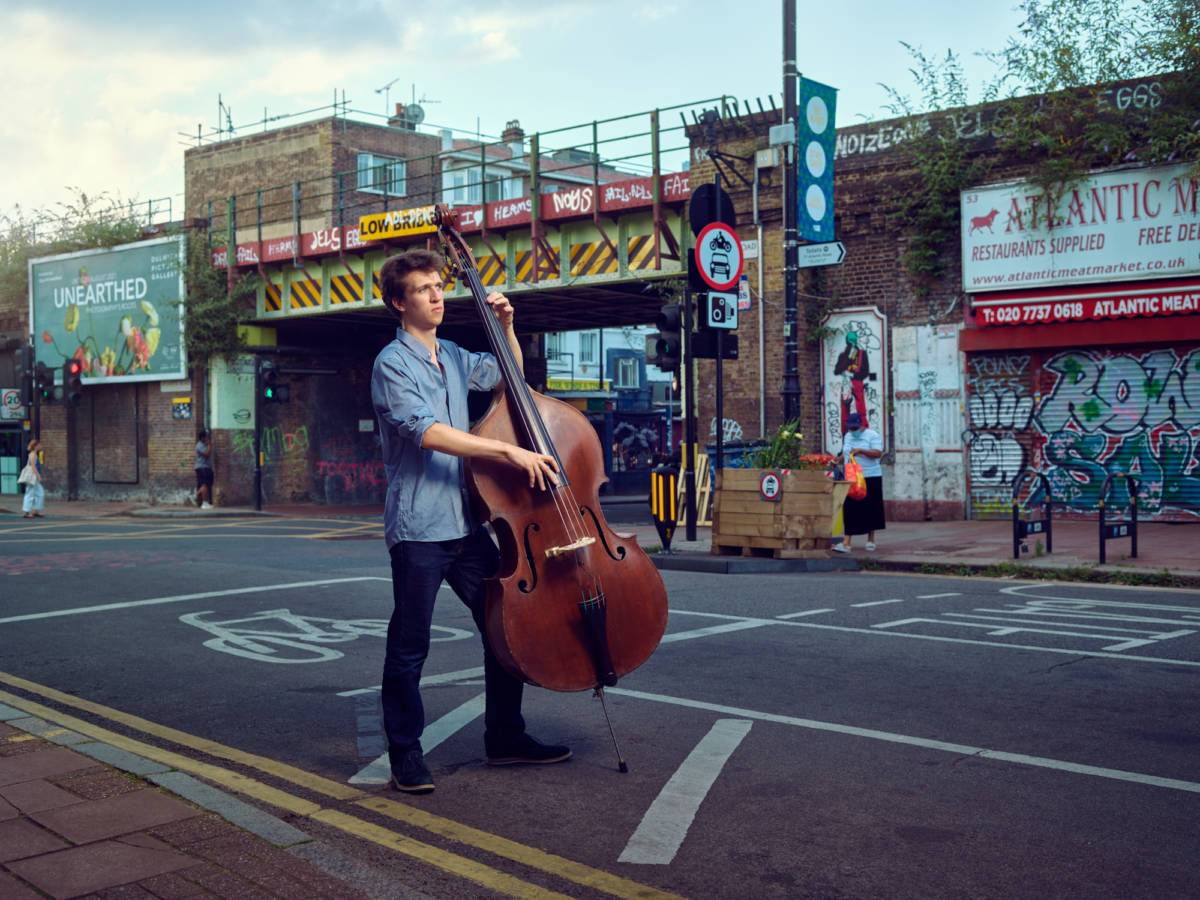
Misha Mullov-Abbado, Atlantic Road/Coldharbour Lane, outside The Dogstar, across from Brixton Village. A junction still bustling at 7pm. Slightly further up the street onto Railton Road was one frontline in confrontations between local Black Communities and the Met Police during the 1981 riots. Today, the part-gentrification of the Village Market (just over Misha's shoulder, beyond the bridge) and the associated steep rise in house prices in the surrounding area, represents another form of frontline for local people.
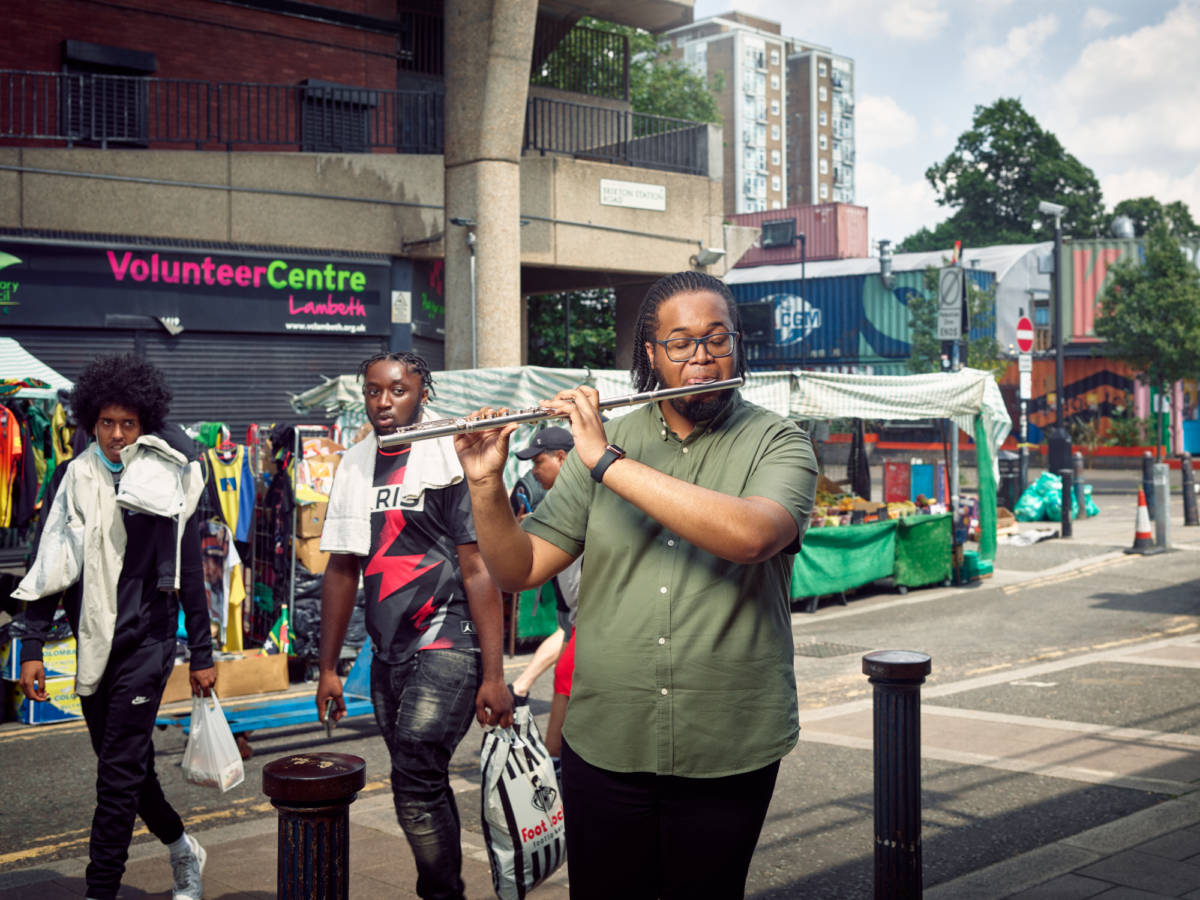
Deronne White, Brixton Station Road, outside The Rec Centre. A founding member of BCO, Deronne joined whilst still studying at Royal Academy of Music and says Brixton "always feels like home." We shot on Station Road opposite the listed-building 'Rec' leisure centre, regarded as one of the last areas possessing an authentic Brixton community feel. Despite the recent railway arches overhaul and the prospect of the 'Rec Quarter' redevelopment, the collection of cafes and shops occupying the railway arches, and daily market traders, together with locals shooting the breeze, still combine to give it a living identity.
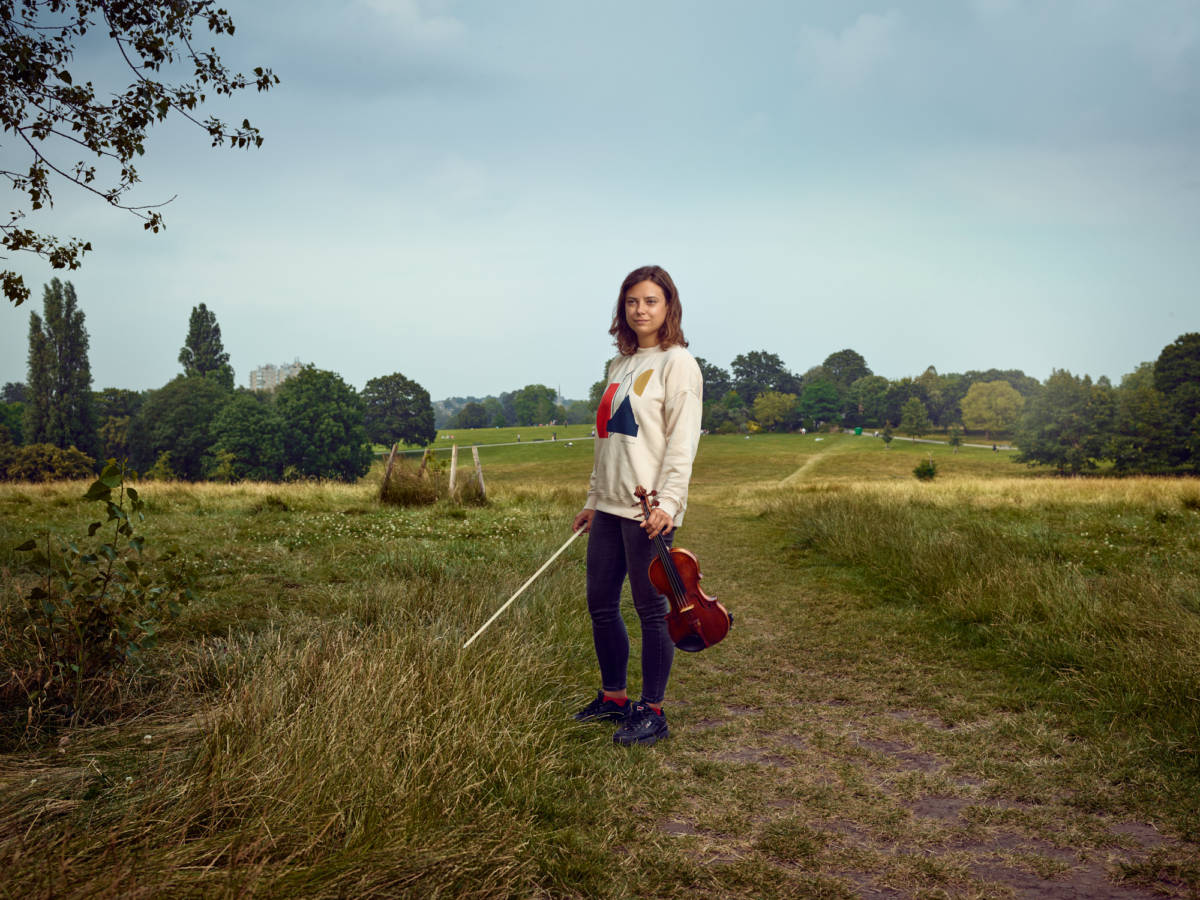
Jaga Klimaszewska, Brockwell Park, Hurst Street Estate in the distance. Originally from Gdansk, Poland, Jaga now performs worldwide after studying at Guildhall and Royal College of Music, but her London home is with BCO in Brixton, where the Victorian-era Brockwell Park in which she was photographed is now a cultural melting pot. Walk through the park on any given summer Sunday and you pass from Caribbean-flavoured BBQs to Central American cook ups to West African feasts, in the space of a few hundred metres.
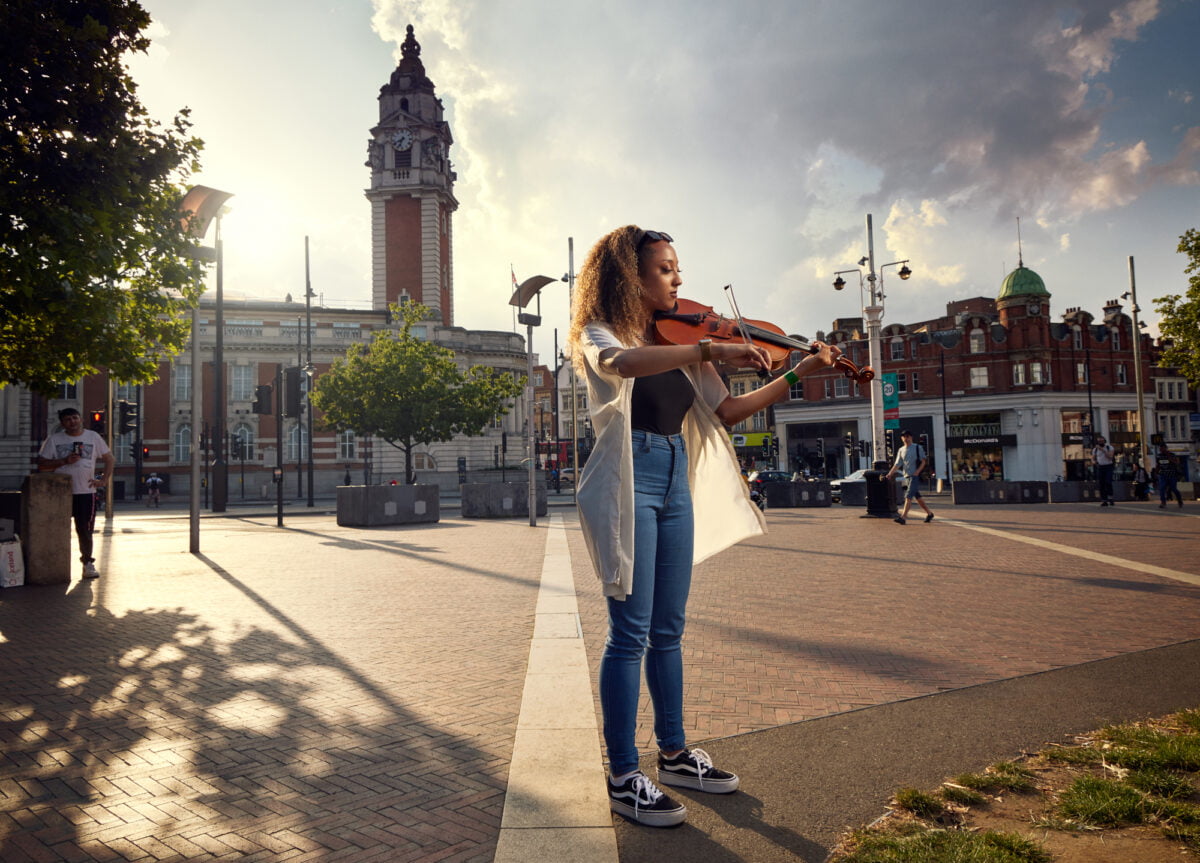
Natalia Senior-Brown, Windrush Square, opposite Lambeth Town Hall. Originally part of Rush Common (and so protected from development), Windrush Square was named for the vessel that brought the first large group of post-war West Indian migrants to the UK, many of whom were housed on nearby Coldharbour Lane. Today, it's a focal point to celebrate local and national Black British experience, home to the Black Cultural Archive and the UK's African and Caribbean War Memorial, dedicated as recently as 2017. Natalia - who is used to playing with artists like Jorja Smith, Bastille and Celeste - played near sunset to the bemused, if appreciative, crowd of locals and skateboarders who can always be found there.

Richard Line-Davies, Market Row. A rare quiet moment with Richard in a bustling 30s-built arcade; with the arrival of the Windrush generation in the 50s and subsequent waves of immigration, produce like yams and plantain became the stock-in-trade of local grocers. Despite displacement of traditional businesses by restaurants and food stores that pay higher rents, it's still one of the best places in London to pick up specialty food stuffs like Alphonso mangoes or ackee.
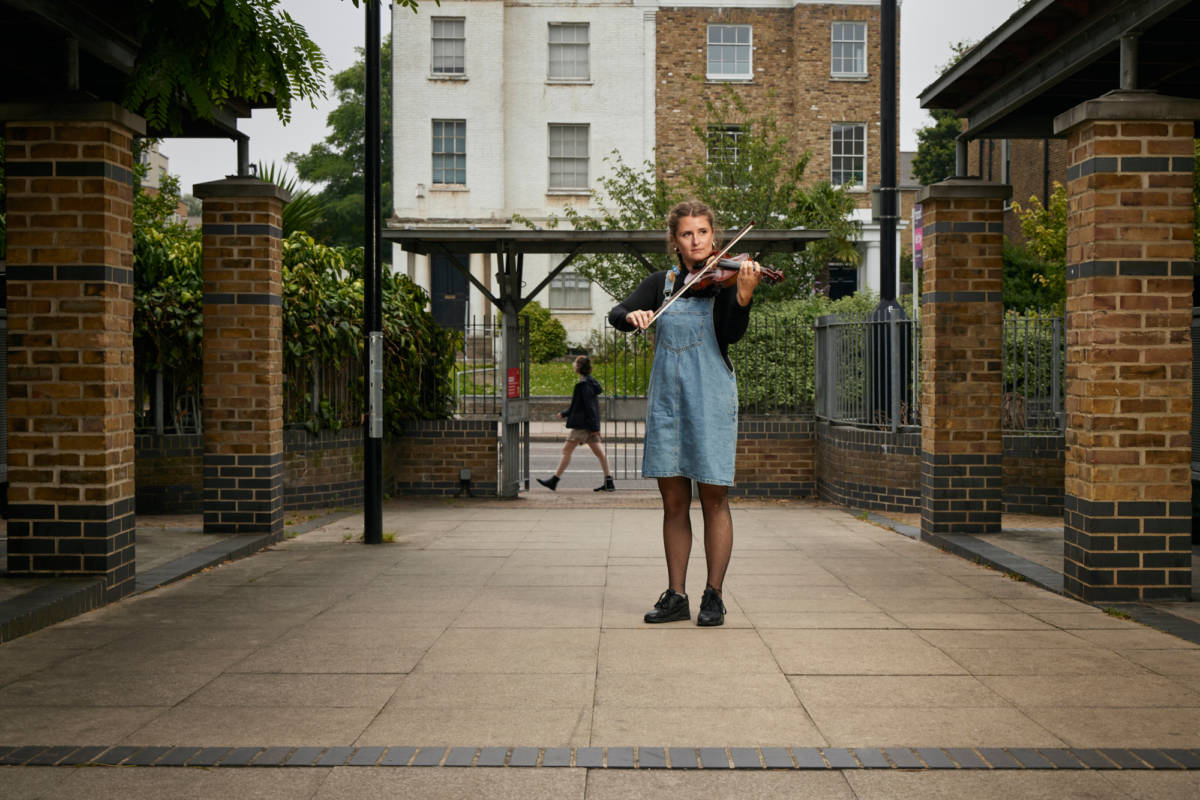
Ana Vandepeer, Angell Town Estate, looking onto Brixton Road. Principal violinist of Brixton Chamber Orchestra, pictured here at Leys Court, North Brixton, looking on to Brixton Road, ahead of a Summer Estates performance. The development was built in close consultation with residents, to replace the formidable and fortress-like 1970s Angell Town concrete block estate which taxi drivers often refused to enter. Open, light and close to the road while centered around communal spaces, Leys offers a very different living experience tailored by and for residents.
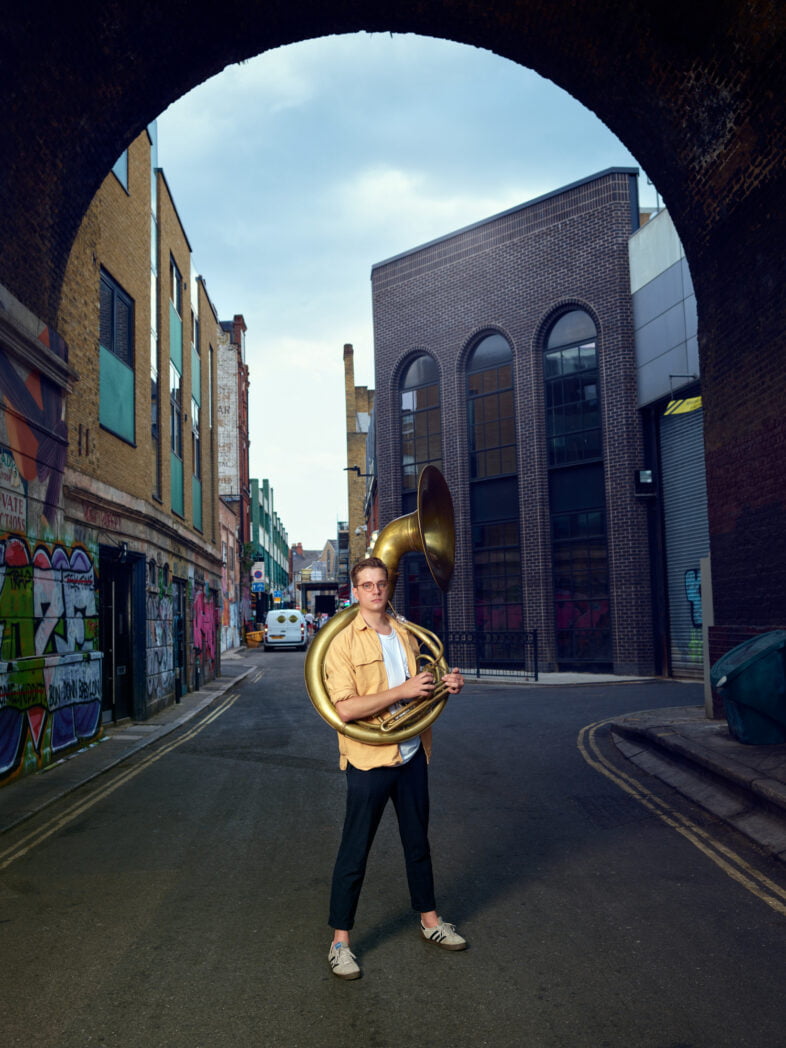
Michael Ruddlesden, under the railway arch on Electric Lane. The sousaphone is not a traditional orchestral instrument, but Michael's presence hints at the less classical side of BOC's repertoire - he leads the well-established "Grime Orchestrated" project that sees the group team up with local and national Rap and Grime artists for live concerts and freestyle events. He is pictured here under an arch of one the elevated railway lines that have helped create Brixton's characteristic archway small business community.
Photographer: Michael Wharley.
Copyright: All images © 2025 Michael Wharley. All rights reserved.